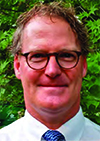Articles
One physician’s experience using NCCSRS
Dr. Patrick Burnside practices emergency medicine in Charlotte, NC. He shared his thoughts on using the state’s prescription drug database in daily practice. Dr. Burnside has been using the system since 2009. Reach Dr. Burnside at burnside.patrick@gmail.com.
Q: How do you use the NCCSRS to monitor your patients?
A: I query the database when considering any controlled substances for patients with risk factors for misuse of these agents. Evidence-based medicine shows that age less than 40, psychiatric and substance abuse history and benzodiazepine use are particularly high risk factors. ED recidivism, unusual “allergy” lists and tobacco smoking are other risk factors. Cigarette smoking is commonly overlooked yet increases opioid misuse risk threefold. On average, I query the system 2-4 times per shift.
Q: When you do an NCCSRS query, what information are you looking for in particular and how do you use it?
A: I first make certain that I pull the proper NCCSRS profile for each patient, though NCCSRS is incredibly accurate. Then I use the system to 1. Help me counsel patients with concerning prescription profiles and 2. Potentially tailor my therapy to the safest analgesic practices for this subgroup. I look for patterns of polyprovider and poly-hospital utilization, as well as specific prescriptions with negligible clinical value/abuse potential ratios (carisoprodol is a great example). A very common yet dangerous prescribing pattern to identify is benzodiazepine-opioid overlap.
Q: Many prescribers complain that NCCSRS is too cumbersome and time-consuming for busy clinicians to use. Do you agree? How have you overcome this in your practice?
A: These are unfounded concerns, given current technology. Clinicians in current practice have heavy data entry and computer interface burdens, but voice recognition software drastically shortens access time. It takes about five minutes to create a voice command and it takes 20-30 seconds to load NCCSRS at the beginning of a shift. Pulling a profile then takes 20-25 seconds.

Patrick Burnside, MD
Q: How do you use the NCCSRS to monitor your patients?
A: I query the database when considering any controlled substances for patients with risk factors for misuse of these agents. Evidence-based medicine shows that age less than 40, psychiatric and substance abuse history and benzodiazepine use are particularly high risk factors. ED recidivism, unusual “allergy” lists and tobacco smoking are other risk factors. Cigarette smoking is commonly overlooked yet increases opioid misuse risk threefold. On average, I query the system 2-4 times per shift.
Q: When you do an NCCSRS query, what information are you looking for in particular and how do you use it?
A: I first make certain that I pull the proper NCCSRS profile for each patient, though NCCSRS is incredibly accurate. Then I use the system to 1. Help me counsel patients with concerning prescription profiles and 2. Potentially tailor my therapy to the safest analgesic practices for this subgroup. I look for patterns of polyprovider and poly-hospital utilization, as well as specific prescriptions with negligible clinical value/abuse potential ratios (carisoprodol is a great example). A very common yet dangerous prescribing pattern to identify is benzodiazepine-opioid overlap.
Q: Many prescribers complain that NCCSRS is too cumbersome and time-consuming for busy clinicians to use. Do you agree? How have you overcome this in your practice?
A: These are unfounded concerns, given current technology. Clinicians in current practice have heavy data entry and computer interface burdens, but voice recognition software drastically shortens access time. It takes about five minutes to create a voice command and it takes 20-30 seconds to load NCCSRS at the beginning of a shift. Pulling a profile then takes 20-25 seconds.

Patrick Burnside, MD
